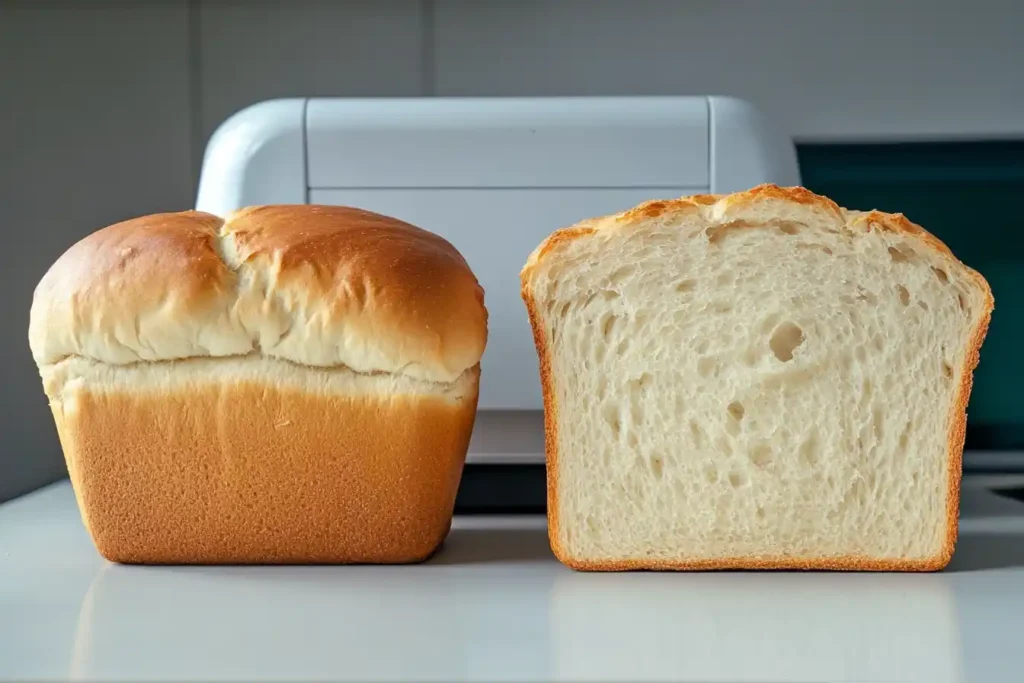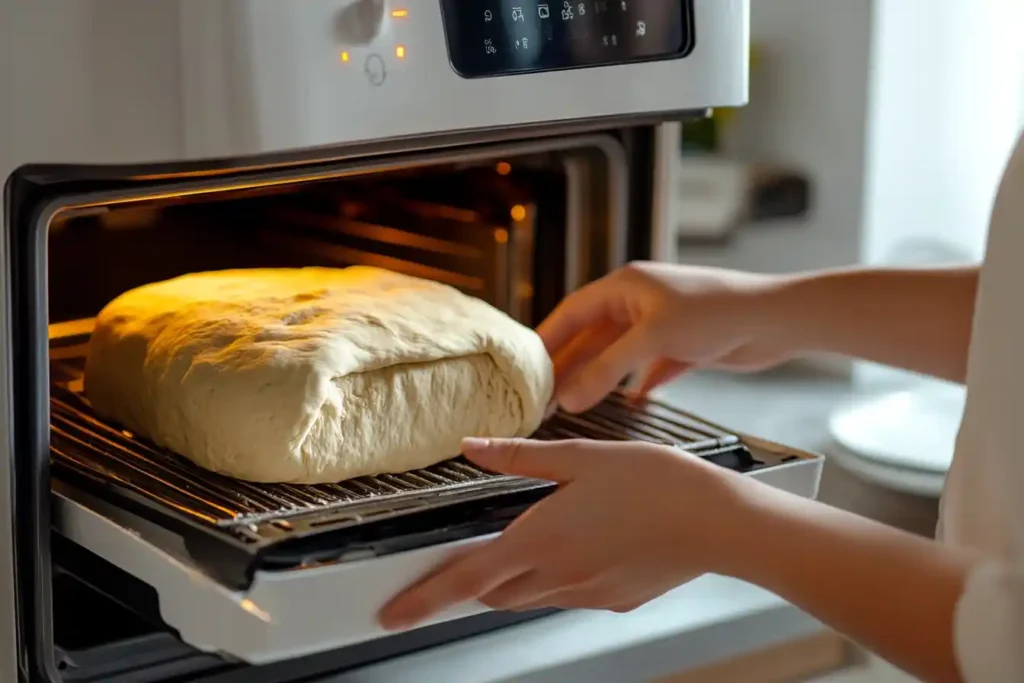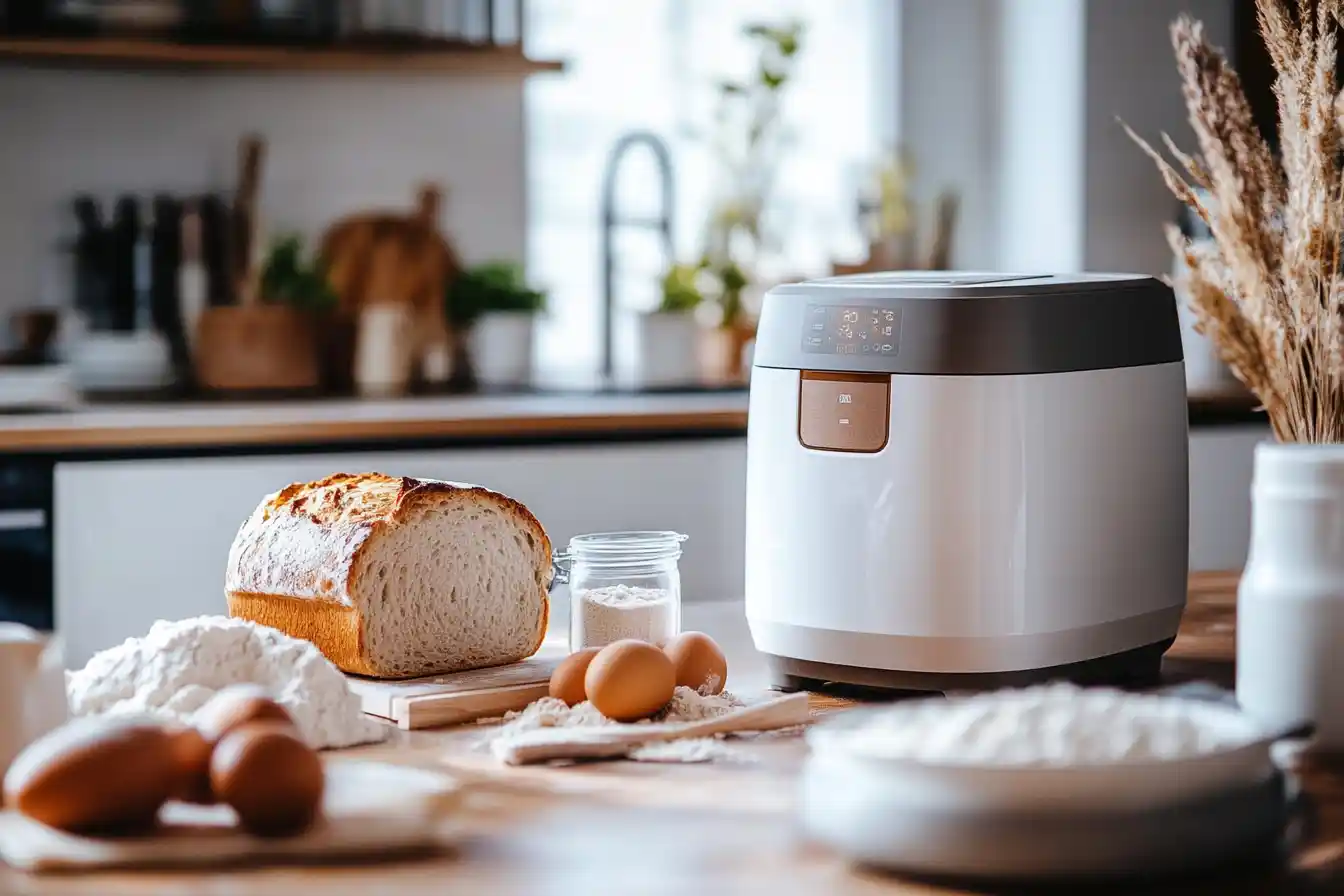Introduction
Bread machines have revolutionized home baking, offering convenience and consistent results for bread lovers. However, what is one drawback of using a bread machine? While these appliances make baking easier, they come with limitations—such as reduced customization of crust texture and loaf shape—that may not appeal to everyone. In this article, we’ll explore the primary drawback of bread machines, along with other potential downsides and practical tips to improve your results.
But as convenient as they are, bread machines are not without their drawbacks. What is one drawback of using a bread machine? The most common complaint is the lack of customization when it comes to the crust texture and shape of the loaf. Unlike traditional baking methods, bread machines tend to produce uniform, rectangular loaves with limited options for crust crispness and artisan-style appearances.
In this article, we’ll dive deeper into this primary drawback, explore other potential limitations, and provide practical tips to overcome them. Whether you’re considering purchasing a bread machine or looking to improve your baking results, we’ve got you covered!
Understanding How Bread Machines Work
Before addressing the drawbacks, it’s important to understand how bread machines operate.
Components and Functions of a Bread Machine
A bread machine typically consists of:
- Mixing Paddle: Kneads the dough inside the bread pan.
- Heating Element: Bakes the bread evenly.
- Timer and Settings Panel: Allows customization of baking cycles and loaf sizes.
- Bread Pan: A removable container where all ingredients are mixed and baked.
The Convenience of Automatic Baking
Bread machines are designed to simplify the bread-making process:
- Add Ingredients: Place ingredients into the bread pan in a specific order (wet ingredients first, followed by dry, and yeast on top).
- Select Settings: Choose loaf size, crust preference, and baking cycle.
- Press Start: The machine handles mixing, kneading, rising, and baking—all in one appliance.
This hands-free process is perfect for busy households, but does it sacrifice creativity and flexibility? Let’s find out.
The Main Drawback of Using a Bread Machine

Limited Customization of Bread Texture and Crust
The biggest drawback of using a bread machine is its inability to customize the texture and crust of the bread to match artisan-style baking.
1. Uniform Shapes and Textures
Bread machines produce rectangular loaves that lack the rustic, round appearance of traditional artisan bread. While this shape is practical for slicing, it may not satisfy those seeking visually appealing designs or varying crust styles.
2. Crust Control Challenges
Most bread machines have limited crust options—light, medium, or dark. Unfortunately, even the “dark” setting may not achieve the crisp, golden-brown crust that comes from baking in a conventional oven. Instead, bread machine crusts often turn out softer and less crunchy.
3. Inability to Add Toppings or Finishes
Artisan techniques often include adding seeds, herbs, or brushing the top with butter or egg wash before baking. Bread machines make it difficult to apply these finishing touches because the loaf bakes inside a sealed compartment.
Why Does This Matter?
For those who prioritize aesthetics and texture, the lack of control can feel restrictive. If you enjoy experimenting with different shapes and crust types, you may find bread machines limiting compared to manual baking methods.
Other Common Drawbacks of Bread Machines
While the lack of customization is the primary concern, several other drawbacks of bread machines deserve attention.
1. Limited Capacity and Loaf Size Options
Bread machines typically produce loaves that weigh between 1 and 2 pounds. For larger households or gatherings, this might not be enough.
- Problem: If you need to bake multiple loaves, you’ll have to repeat the process, which can be time-consuming.
- Solution: Look for machines with adjustable loaf size settings or bake additional loaves in advance and freeze them for later use.
2. Cost Considerations and Price Variations
Bread machines range from budget-friendly models to high-end units with advanced features.
- Problem: Entry-level machines may lack features, while premium models can be costly.
- Solution: Assess how often you’ll use the machine before deciding on a model. If you’re an occasional baker, a mid-range option may provide the best value.
3. Dependence on Electricity
Bread machines rely entirely on electricity, which may not be ideal during power outages.
- Problem: Once the baking cycle starts, any power interruption can disrupt the process, leading to incomplete baking.
- Solution: Use a surge protector and have backup plans, like manually baking in an oven if the dough cycle completes but the baking cycle stops.
4. Noise Levels During Kneading Cycles
Some bread machines can be noisy, especially during the kneading process.
- Problem: Loud mechanical sounds can be disruptive, particularly in small apartments or open kitchen spaces.
- Solution: Place the machine in a separate area, such as a pantry, or use it during times when noise won’t be an issue.
5. Cleaning Challenges with Non-Removable Parts
Certain bread machines have non-removable paddles or pans, making cleaning more complicated.
- Problem: Dough residue and crumbs can stick in corners, leading to mold or unpleasant smells if not cleaned properly.
- Solution: Opt for models with removable, dishwasher-safe parts or clean immediately after baking while residue is still soft.
Benefits That Offset the Drawbacks
Despite these drawbacks, bread machines continue to be a popular choice for home bakers. Let’s explore why:
1. Ease of Use and Time-Saving Features
- Bread machines eliminate the need for manual kneading and proofing, saving time and effort.
- Pre-programmed settings make baking accessible for beginners.
2. Hands-Off Process for Busy Individuals
- Add ingredients, press a button, and walk away—the machine does the rest.
- Ideal for those with busy schedules or limited baking experience.
3. Consistency and Predictable Results
- Bread machines follow set programs, reducing the risk of human error.
- Results are often consistent, making it easier to perfect recipes.
Tips for Overcoming Bread Machine Limitations

While bread machines have a few drawbacks, there are several ways to work around these issues and improve your results.
1. Enhancing Crust and Texture
If the crust from your bread machine lacks crispiness, try these tips:
- Remove Dough Before Final Bake: Use the bread machine for kneading and rising, then shape the dough and bake it in a conventional oven for a better crust.
- Brush the Top: Add an egg wash, butter glaze, or sprinkle seeds on the loaf before transferring it to the oven.
- Broil for a Golden Finish: If the loaf bakes fully in the machine, you can still pop it in the oven under the broiler for a few minutes to crisp up the crust.
2. Customizing Recipes to Suit Preferences
Bread machines often include preset programs, but that doesn’t mean you can’t experiment.
- Adjust Ingredients: Add spices, herbs, or cheese for a unique flavor twist.
- Mix in Manually: Pause the machine to add nuts, dried fruits, or chocolate chips to avoid overmixing or uneven distribution.
- Use Dough Cycle Only: Let the bread machine handle the mixing and kneading, then shape and bake manually for more control.
3. Leveraging Programmable Features
Many modern bread machines come with programmable settings that allow you to fine-tune the baking process.
- Delayed Start Timers: Load ingredients in advance and set the machine to start baking later, ensuring fresh bread when you need it.
- Custom Settings: Experiment with crust color and loaf size options to achieve your preferred results.
- Dough-Only Setting: Ideal for making pizza dough, dinner rolls, and other baked goods beyond bread loaves.
4. Cleaning and Maintenance Tips
Proper cleaning extends the life of your bread machine and ensures consistent results.
- Clean Immediately After Use: Remove crumbs and residue while the parts are still warm.
- Soak Non-Removable Paddles: If dough sticks to the paddles, soak them with warm water and gently clean with a soft brush.
- Wipe Exterior Regularly: Keep the control panel and outer surface clean to prevent buildup.
Alternatives to Bread Machines
If bread machines feel too limiting, here are some popular alternatives:
1. Manual Baking for Full Control
Kneading dough by hand allows you to experiment with textures, shaping, and crust styles, offering complete customization.
2. Stand Mixers with Dough Hooks
Stand mixers simplify the kneading process without sacrificing control, making them ideal for bakers who want flexibility.
3. Artisan Techniques for Traditional Bread Baking
Techniques like sourdough starters and Dutch oven baking create rustic, bakery-style loaves with complex flavors and crisp crusts.
FAQs
1. What types of bread can be made in a bread machine?
Bread machines can make white, whole wheat, gluten-free, sweet, and specialty breads like cinnamon raisin and herb loaves. Many models also offer settings for dough, jam, and even cakes.
2. Can I use a bread machine just for kneading dough
Yes! Most bread machines have a “dough-only” cycle, which mixes and kneads the dough. You can then shape and bake it in a conventional oven.
3. How can I make crustier bread with a bread machine
For a crispier crust, remove the dough after kneading and bake it in a conventional oven. Alternatively, finish the loaf under a broiler for a golden crust.
4. Are bread machines worth the cost for beginners?
Absolutely! Bread machines simplify baking, making them ideal for beginners who want consistent results without mastering complex techniques.
5. How do I clean and maintain a bread machine?
Remove crumbs and residue immediately after baking. Use warm water to clean pans and paddles, and avoid using harsh detergents that could damage non-stick coatings.
6. Can I bake gluten-free bread in a bread machine?
Yes, many bread machines include gluten-free settings that ensure proper mixing and baking for gluten-free recipes.
Conclusion
Bread machines are a fantastic tool for anyone who loves the smell and taste of freshly baked bread without the hassle of manual kneading and baking. They simplify the bread-making process, making it accessible to beginners and convenient for busy households.
However, one main drawback of using a bread machine is its limited customization options, especially when it comes to crust texture, loaf shape, and artisan-style finishes. For those who prioritize aesthetics and flavor variations, this lack of flexibility may feel restrictive.
Despite this limitation, bread machines remain a valuable addition to the kitchen due to their time-saving features, consistent results, and ease of use. With a few adjustments—such as finishing the bread in an oven or using programmable settings—you can overcome these challenges and create delicious, bakery-quality loaves.
Whether you’re a beginner baker or an experienced home cook, the key to maximizing a bread machine’s potential lies in understanding its limitations and learning how to work around them. With these tips and insights, you’re well-equipped to enjoy homemade bread that’s both convenient and delicious!
Curious about optimizing your bread-making process? Discover why bread machines may no longer be popular and whether they still hold value in modern kitchens. Also, explore whether it’s cheaper to buy bread or make it in a bread machine for cost-saving insights!

